The purpose of these didactic games- help adults - parents or educators - prepare the child for school, develop his memory, attention, and thinking. On each page the child is asked to complete a task; the tasks are designed for children 4,5,6 summer age(preschoolers). By completing tasks, children will learn to compare and reason, and develop the ability to think logically. We hope that these entertaining brain teasers will help your baby become more attentive and smart.
4-5 years
In each picture, invite the child to select the missing item by analogy, selecting it from the frame at the bottom of the picture. It’s good if the child independently explains his choice, for example: “The wheel is part of the car, and the window is part of the house. The remaining objects are not suitable, because they are not parts of the house.” If your child is at a loss or gives the wrong answer, prompt him, but do not answer completely for him.
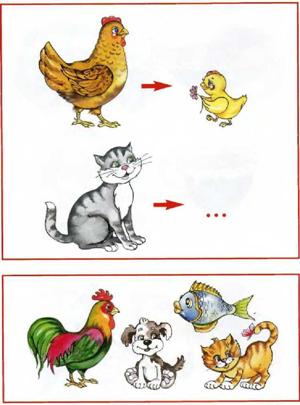
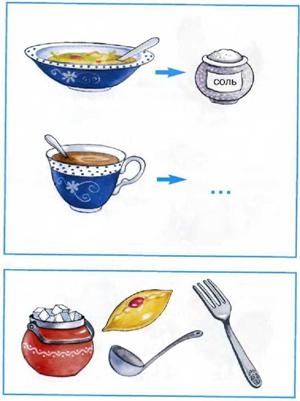
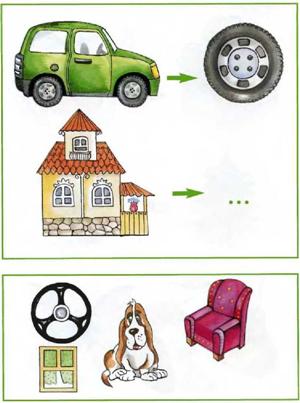
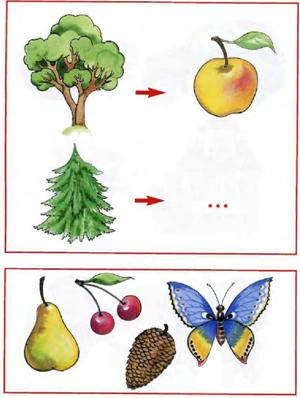
![]()
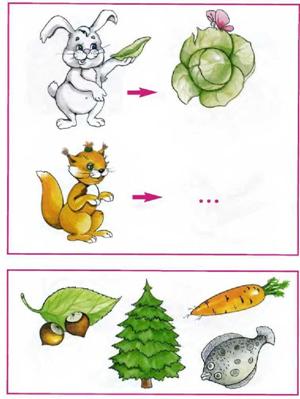
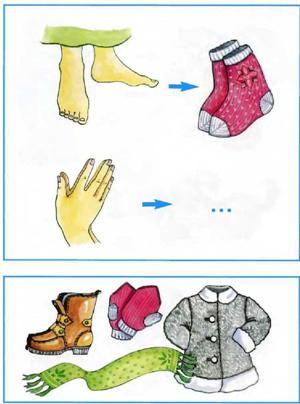
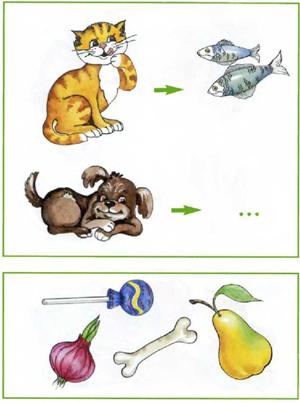
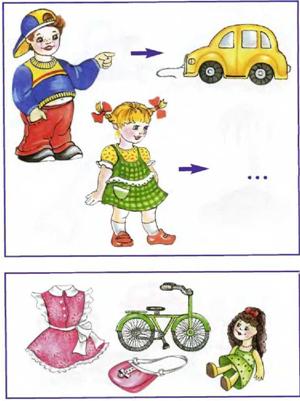
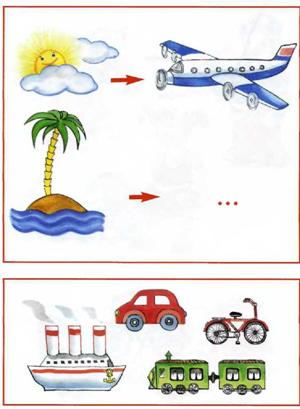
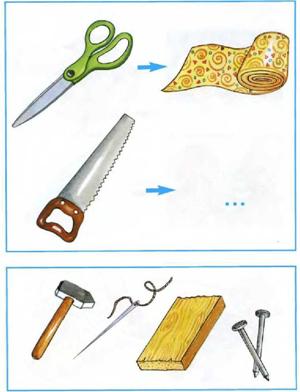
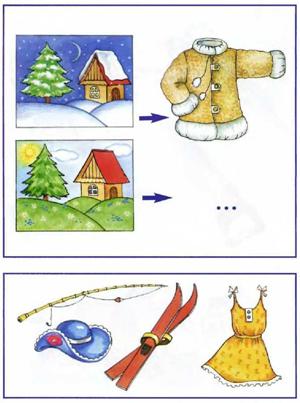
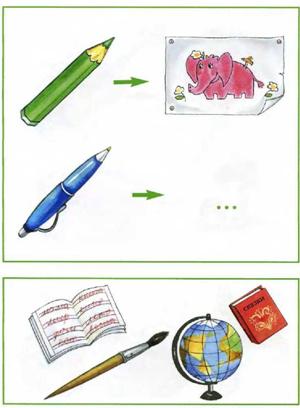
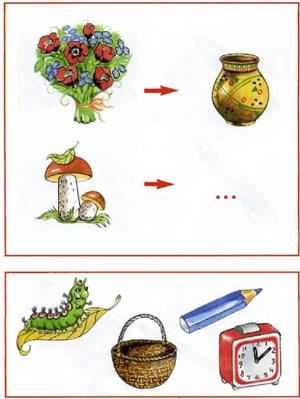
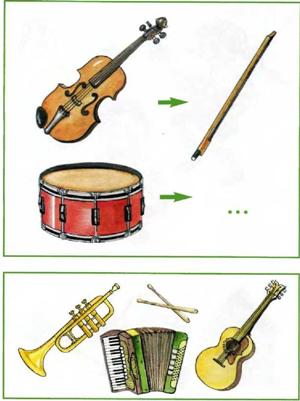
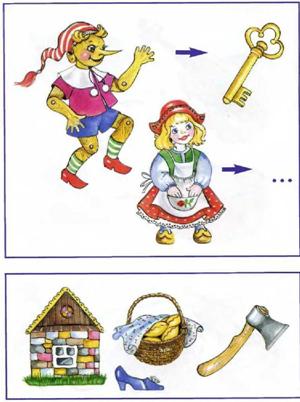
5-6 years
Each picture contains 3 types of tasks. When reading the text of the first task with your child, try to push him to independence, to a creative approach to solving.
When completing the second task, explain to your child that you need to subtract or add other objects from a certain set of objects and draw the resulting answer.
When completing the third task, the child is asked to establish a pattern and select a suitable pair for an object by analogy.
March 21, 2016
For correct and comprehensive development the child simply needs development. In the future, it will help the child analyze any situation and choose best way solving a task or problem based on the conditions existing at that time.
It is advisable to start playing with children who are already 5-6 years old. A child of this age can independently draw logical conclusions, can understand which object is the odd one out of those given to him, can find commonality in objects and form them into groups according to this characteristic, can also tell a short story using pictures and understands how to apply theory in practice.
Pictures with children's exercises allow them to develop logic in the form of a game. These games are very simple, but will be interesting for both the baby and the adult playing with him.
There are simpler games with pictures on, such as:
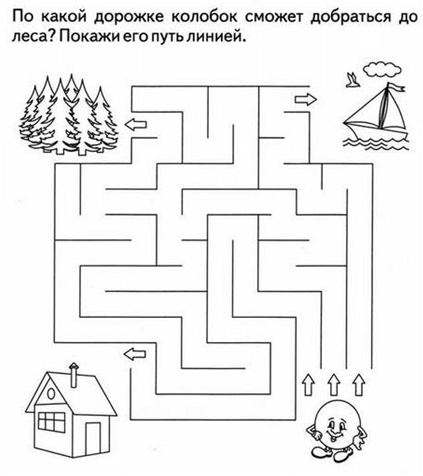
But there are also more complex games for children 5-6, which allow them to develop analytical abilities in the scope of development of logic.
For example, an adult should draw several shapes on a piece of paper: circle, triangle, square, circle, triangle, square, circle, triangle. The child will have to look at the drawn figures and draw the figure that will follow the triangle.
A good game for developing analysis in five-year-old children would be a game where the child will have to line up cubes by size in descending and then ascending order.
A game called “Friends” has proven itself well. It perfectly develops attentiveness and intelligence, the child acquires the ability to analyze what is happening, and also applies his existing mathematical skills and develops them.
The essence of the game is that the child must draw his best friends himself, but at the same time he must accurately depict their height. For example, Petya is taller than Masha, and Masha is taller than Katya, and Marina is the shortest girl. Under each friend you draw you will need to write his name.
Now the child will have to name which of his friends is the tallest and which is the shortest. You can also ask the child to say how many guys he has drawn, ask him who is depicted first in the drawing, who is second and who is fifth, who is drawn to the left of Katya and who is to the right of Masha. You can invite the child to count how many children there will be in the picture if two leave, and also how many children there will be if another girl joins the game.
One more interesting game for children 5-6 years old there will be a game called “Abstract Artist”. While playing, the child will develop memory and intelligence, the baby will try to organize his work himself, and also, if two or more children play, they will also be able to develop their competitive abilities.
An adult will have to draw a telephone dial and arrange the numbers on it, but not in order, but in discord. The child will have to look at the drawing and correct any visible errors.
If there are several children, prepare more drawings and ask the children to correct the mistakes. You can give a small prize to the first person to complete the task.
Games for preschoolers
It is very easy for preschool children to be interested and drawn into a game where logic is developed through questions.
But only now little ones will answer questions, and adults will ask. This game is suitable for children five and six years old; it should take place in a calm, friendly and fun atmosphere. Be sure to praise your child for his efforts and correct answers.
A couple to warm up interesting tasks, you need to complete the logical missing elements:
The “Believe it or not believe it” game is that the child will have to learn to think for himself and will not rush to accept as an axiom any information that comes from adults. This is an extremely important skill for children aged six.
So, the adult says the phrase, and the child listens and concludes whether the statement is true or false. Examples of phrases can be very different:
- All apples are green.
- Dinosaurs live in the forest.
- Raspberries grow on a tree.
- It rains in summer.
- There is snow only in January.
- All the birds fly.
Ask your baby not only unambiguous phrases, but also ones that can be answered in two ways. Let the child think, justify his point of view, this is how curiosity develops, the desire to get to the bottom of things, observation develops and the baby gains his own life experience.
Another interesting game for six-year-old preschoolers will be the game “Name in One Word.”
The child will learn to think abstractly and will be able to develop generalization abilities. An adult will have to name a group of words that have one common feature, and a child of five or six years old will have to say how these words can be called in their entirety:
- “Bedside table, shelf, table, chair” – the general name for “furniture”
- “Eraser, sharpener, felt-tip pen, marker” - “stationery”
- “Cucumber, tomato, onion, cabbage – “vegetables”
- “Cat, dog, cow, crocodile” - “animals”
- “Chicken, parrot, pigeon, seagull” - “birds”
Math riddles
At the age of five, a child should already be able to count to at least ten, as well as perform simple mathematical operations. You can teach your child to perform simple mathematical operations in everyday situations; you don’t need to set aside any special time for this.
An example of such a game would be counting the objects that surround us in life every day. You can ask your child to count how many chairs there are in the room. Ask your child whether there will be enough chairs if you need to seat six guests on them. If not, ask how many chairs will need to be brought into the room to accommodate everyone. The purpose of this game will be the development of such mathematical operations as addition and subtraction, but at the same time their development will occur in the form of an easy and unobtrusive game and the child will better learn the material.
Use blocks or other toys to help your child understand how to add 2 and 2 to make 4; ask your child to count how many blocks will be left if he gives two of the five blocks to his friend. Such mathematical riddles, supported by actions and visual images, will be remembered by the child much better than working with the same actions on paper.
(5-7 years) is the period of formation in a child of knowledge and skills that he will later need at school and in life. At this time, children go through a period of “why”, and the children begin to be interested in more global issues. A preschooler should already be able to read, count to 10, and know the names of the basic geometric shapes on the plane and in volume. The formation of the concepts of “good and bad” is very important during this period. At 5 years old, a child can already concentrate well on a specific task and complete it without distraction. That is why at this age it is necessary to develop the child in all directions. Assignments for a 5-year-old child will help him prepare as much as possible for school.
Speech development in a preschooler
As a rule, at this age children already speak well. They know many words, can construct complex sentences, and also describe events and objects using synonyms and antonyms. Children aged 4-5 years listen very carefully to how adults speak and copy their communication style. It is very important that a five-year-old child learns to pronounce every sound and word correctly. In order for a child’s speech to be clear and sonorous, it is necessary to perform speech development exercises with him.
Speech therapy classes
Speech therapy tasks for children 5 years old are divided into several categories: finger gymnastics and tongue twisters. Tasks using fingers are very conducive to speech development, articulation gymnastics allows you to correctly open your mouth and position your tongue while pronouncing sounds; tongue twisters, in turn, reinforce the acquired knowledge. Let's look at each of the categories separately.
Finger gymnastics
An example of a development task for a 5-year-old child fine motor skills: "Flower"
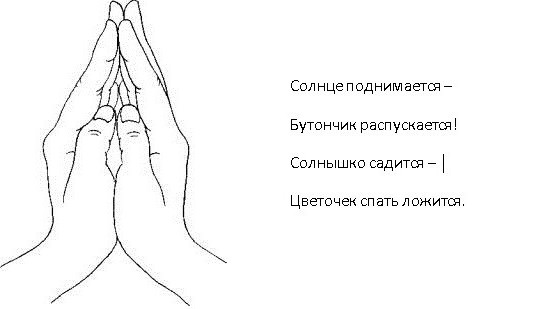
Fold your hands so that they form a flower bud. When reading a poem, open the flower at the words “blooms,” and close the flower at the word “lays down.”
Articulation gymnastics
Articulatory (facial) gymnastics are exercises to develop the muscles of the tongue and lips. If these parts of the child’s body are not sufficiently developed, then he will not be able to pronounce sounds correctly and clearly. It is recommended to complete tasks for a 5-year-old child to develop articulation near a mirror.
- Ask your baby Let him imagine that the tongue is a swing, and swing it on the count of one - towards the upper teeth, on the count of two - towards the lower teeth.
- Exercises with lips: on the count of one, stretch your lips into a tube, on the count of two, smile widely. You can also try scratching your upper and lower lip with your teeth.
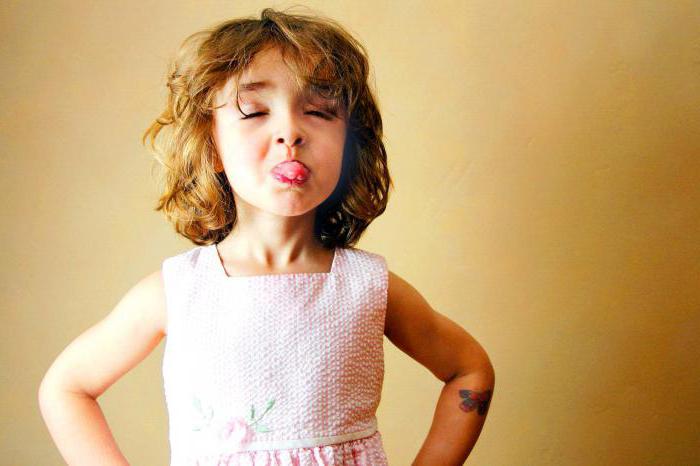
Tongue twisters
There are a huge number of tongue twisters for each sound. All of them help develop the child’s speech: make it clearer and more expressive.
Developmental tasks for children 5 years old in the form of tongue twisters:
![]()
Such tongue twisters teach you to pronounce the sounds [t][d][h]. Children really enjoy reading and learning such funny rhymes.
Developing memory
A child’s memory must begin to develop as early as preschool age. At the age of 5, children perceive and remember new information very well, and in order for such results to be maintained in the future, some effort must be made. So what developmental tasks for 5-year-old children help train their memory?
- Memorizing objects. Place 4 different objects in front of your baby (for example: a car, a pen, a phone and keys). Ask your child to take a good look at them and turn away. Remove objects from view. Now, when the child turns around, ask him to name what he saw before. If this is not difficult for him, complicate the exercise - ask the color of the objects, shape, purpose.
- Memorizing words (objects and actions). Say 4 different words in a row (objects - table, cup, house, flower, or 4 different actions - sit, read, play, laugh) and ask the child to repeat them. If such tasks for a 5-year-old child turn out to be easy, feel free to use 5-7 words.
- “Spot the difference” pictures, as well as reading and analyzing books you’ve read, help train your memory. For example, start reading a long fairy tale to your child. Read half and leave the rest for the next day. Before reading the next part, ask your child what he remembers from the previous one, analyze together the characters and events of this story.
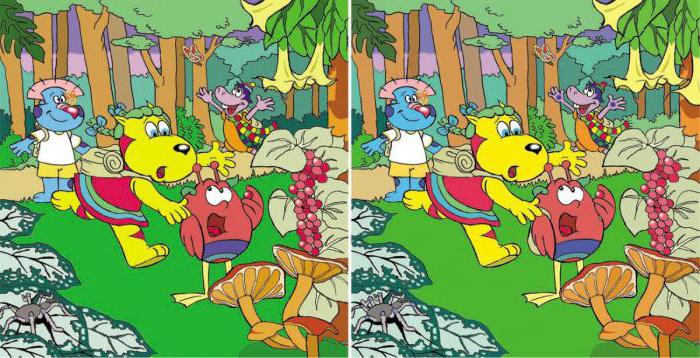
Developmental tasks for logic
Logic is a very important ability that needs to be developed. The thinking of a child at the age of 5 is very unique. Surely many mothers have noticed that at this age children are sometimes smarter than adults. It is very important not to miss this period and help the child develop.
Before studying for children 5 years old, it is necessary to determine what types of thinking a child at this age already operates on. As a rule, at 5 years old children are able to compare, analyze, classify and synthesize objects and actions.
Exercise “Complete the Draw”
The bottom line is that the child needs to finish drawing part of the object.
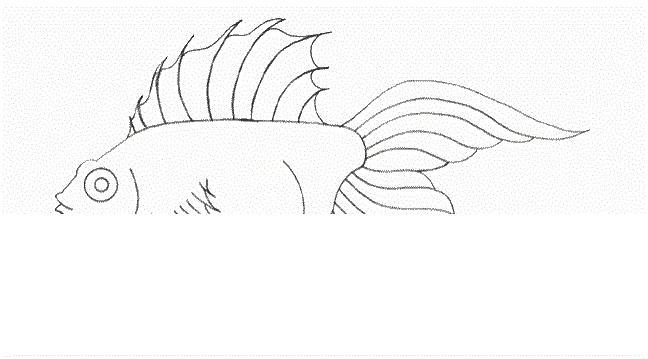
Children's puzzles help develop logic. Putting together puzzles with the whole family is a very fun and rewarding activity. In addition, math assignments for 5-year-old children help develop thinking. For example, place 8 coins on the table and give your child matches. Ask him to put as many matches as coins on the table.
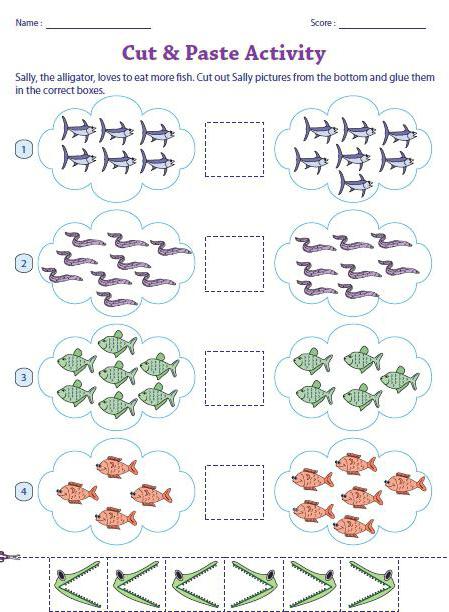
Spend at least 30 minutes every day. However, you should not overtire or force your baby; be sure to take breaks for gymnastics. The process of studying with a child should look like an exciting game for him, and then he will learn and remember everything well.



